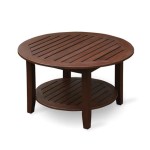Best Paint for Outdoor Fence: A Comprehensive Guide
Maintaining an outdoor fence involves more than just ensuring its structural integrity. Protecting it from the elements is equally crucial, and the right paint plays a pivotal role in this. Exposure to sunlight, rain, snow, and temperature fluctuations can degrade the fence material over time. Selecting the appropriate paint not only enhances the aesthetic appeal of the fence but also provides a protective barrier against these damaging factors, extending its lifespan and reducing the need for frequent repairs or replacements.
The market offers a wide array of paints designed for outdoor use, each with its own set of properties and benefits. Factors like the type of fence material (wood, metal, vinyl), the local climate, and the desired aesthetic outcome should inform the choice of paint. Understanding the specific characteristics of different paint types and their suitability for various situations is essential for achieving optimal results.
Understanding Different Types of Outdoor Fence Paint
Several categories of paint are commonly used for outdoor fences, each with distinct chemical compositions that influence their performance and durability. The most popular choices include acrylic latex, oil-based, and specialized paints designed for specific materials like vinyl or metal.
Acrylic Latex Paint: This is a water-based paint known for its flexibility, durability, and ease of application. Acrylic latex paints are resistant to cracking and peeling, making them a suitable choice for wood fences that are subject to expansion and contraction due to changes in temperature and humidity. They also offer good color retention and are available in a wide range of colors and finishes. Furthermore, acrylic latex paints are environmentally friendly, emitting lower levels of volatile organic compounds (VOCs) compared to oil-based paints, making them a safer option for both the environment and the applicator.
Acrylic latex paints can be further categorized into 100% acrylic and vinyl acrylic blends. 100% acrylic paints offer superior adhesion, flexibility, and resistance to fading, making them a premium choice for long-lasting protection. Vinyl acrylic blends are typically more affordable but may not offer the same level of performance as 100% acrylic paints.
Oil-Based Paint: Oil-based paints, also known as alkyd paints, are known for their durability and resistance to scratches and abrasion. They provide a hard, glossy finish that is ideal for surfaces that require frequent cleaning or that are exposed to heavy wear and tear. Oil-based paints also offer excellent adhesion to previously painted surfaces and can be used on a variety of materials, including wood, metal, and masonry.
However, oil-based paints have several drawbacks. They emit high levels of VOCs, which can be harmful to the environment and human health. They also require mineral spirits or paint thinner for cleanup, which can be messy and time-consuming. Additionally, oil-based paints tend to yellow over time, especially when exposed to sunlight. Due to these factors, oil-based paints are becoming less common for outdoor fence applications, with acrylic latex paints offering a more environmentally friendly and user-friendly alternative.
Specialized Paints: In addition to acrylic latex and oil-based paints, there are also specialized paints designed for specific fence materials. For example, vinyl fences require paints that are specifically formulated to adhere to the smooth, non-porous surface of vinyl. These paints typically contain additives that improve adhesion and flexibility, preventing cracking and peeling. Metal fences require paints that are resistant to rust and corrosion. These paints often contain rust inhibitors and primers that provide a protective barrier against moisture and other corrosive elements.
Choosing the right type of paint for the specific fence material is crucial for achieving long-lasting protection and a professional-looking finish. Consulting with a paint specialist or reading the manufacturer's recommendations can help ensure that the chosen paint is compatible with the fence material and will provide the desired level of performance.
Key Considerations for Choosing the Right Paint
Beyond the type of paint, several other factors should be considered when selecting the best paint for an outdoor fence. These include the climate, the level of sun exposure, the existing condition of the fence, and the desired aesthetic outcome.
Climate: The local climate plays a significant role in determining the type of paint that is best suited for an outdoor fence. In areas with high humidity and rainfall, paints that are resistant to moisture and mildew are essential. Acrylic latex paints are generally a good choice for these climates, as they are breathable and allow moisture to escape from the wood, preventing rot and decay. In areas with extreme temperatures, paints that are resistant to cracking and peeling are necessary. Oil-based paints and high-quality acrylic latex paints can withstand temperature fluctuations and provide long-lasting protection.
Sun Exposure: Prolonged exposure to sunlight can cause paint to fade and degrade over time. Paints that contain UV inhibitors are essential for fences that are located in areas with high sun exposure. These inhibitors help to protect the paint pigments from fading and prevent the paint from becoming brittle and cracking. Darker colors tend to absorb more heat than lighter colors, so they may fade more quickly in direct sunlight. Choosing a lighter color or using a paint with excellent UV resistance can help to mitigate this effect.
Condition of the Fence: The existing condition of the fence will also influence the choice of paint. If the fence is old and weathered, it may require extensive preparation before painting. This may include cleaning, sanding, and priming. Using a high-quality primer can help to improve adhesion and provide a uniform surface for the paint. If the fence is already painted, it is important to determine whether the existing paint is oil-based or latex-based. Oil-based paint should be primed with an oil-based primer before applying latex paint, and vice versa. Applying the wrong type of paint over an existing finish can lead to adhesion problems and peeling.
Desired Aesthetic Outcome: The desired aesthetic outcome is another important consideration. The color and sheen of the paint can significantly impact the overall appearance of the fence. Lighter colors can make a fence appear larger and more inviting, while darker colors can create a more dramatic and sophisticated look. A matte finish can create a more rustic and understated appearance, while a glossy finish can provide a more polished and modern look. It is important to choose a color and finish that complements the surrounding landscape and architecture.
Furthermore, consider the long-term maintenance requirements of the chosen color and finish. Darker colors may show dirt and grime more easily than lighter colors, requiring more frequent cleaning. Glossy finishes may highlight imperfections in the fence surface, while matte finishes can help to conceal them.
Preparing the Fence for Painting
Proper preparation is crucial for achieving a professional-looking and long-lasting paint job. Before applying any paint, the fence must be thoroughly cleaned, repaired, and primed. Skipping these steps can result in poor adhesion, peeling, and a shortened lifespan for the paint job.
Cleaning: The first step in preparing the fence for painting is to clean it thoroughly. This will remove dirt, grime, mildew, and any loose or peeling paint. A pressure washer can be used to clean the fence quickly and effectively, but it is important to use a low-pressure setting to avoid damaging the wood. For more delicate materials, a scrub brush and a mild detergent solution can be used. Be sure to rinse the fence thoroughly with clean water after cleaning to remove any remaining detergent residue. A mildew cleaner can be used to kill any existing mildew and prevent it from returning.
Repairs: After cleaning the fence, inspect it for any damage, such as broken boards, loose nails, or rotting wood. Replace any damaged boards and secure any loose nails. Fill any holes or cracks with wood filler and sand smooth. Addressing these repairs before painting will ensure a smooth and uniform surface for the paint.
Priming: Priming is an essential step in preparing the fence for painting, especially if the fence is new, bare wood, or if the existing paint is peeling or chalking. Primer helps to seal the wood, improve adhesion, and provide a uniform surface for the paint. Choose a primer that is specifically designed for exterior use and that is compatible with the chosen paint. Apply the primer according to the manufacturer's instructions, using a brush, roller, or sprayer. Allow the primer to dry completely before applying the paint.
For metal fences, it is crucial to use a rust-inhibiting primer to prevent corrosion. Clean the metal surface thoroughly, removing any rust with a wire brush or sandpaper. Apply the rust-inhibiting primer according to the manufacturer's instructions, ensuring that all surfaces are adequately coated.
By following these preparation steps, you can ensure that the paint adheres properly to the fence and provides long-lasting protection against the elements. This will not only improve the appearance of the fence but also extend its lifespan and reduce the need for future repairs.

Which Fence Paint Is Best Top 5 Paints

Fence Paint Color Ideas To Boost Curb Appeal Wow 1 Day Painting

Best Colour For Fences In Small Gardens

Top 5 Garden Fence Paint Colours The Best Paints

What Is The Best Paint For A Wood Fence Pro Painters

Which Fence Paint Is Best Top 5 Paints

19 Trending Fence Paint Colours For A Spring Garden Makeover

Fence Paint Color Ideas To Boost Curb Appeal Wow 1 Day Painting

How To Paint A Fence Thistlewood Farm

How To Paint A Wood Fence The Fast And Easy Way








